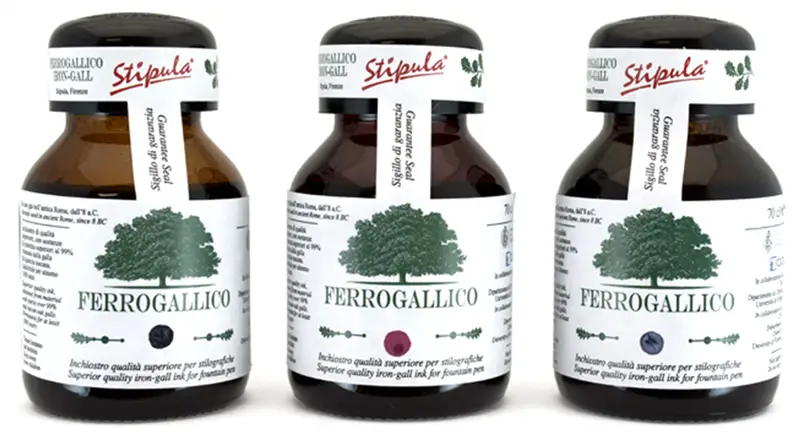Stipula Iron-Gall Ink 70 ml.
Stipula 1 stars, based on 1 reviewfrom € 29.51

Product available
Stipula Iron-Gall Ink
IThe Iron-Gall ink, has been the reference ink from the Middle Ages until 1950 and, if of good quality, has considerable qualities of durability, strength and color. The chemical reaction between tannin and iron salts was known since antiquity.
Pliny the Elder (A.D. 23/79) describes an experiment in which he wets with a solution of iron salts a papyrus previously impregnated with a tannin solution, with the result of obtaining the immediate blackening of the papyrus, originally cream color.
Only a few centuries later Marziano Capella (Fifth century) provides a formula for the preparation of an ink, which he calls “gallarum gummeosque commixtio”.
The era of the transition between the so-called Indian ink and iron-gall ink is indefinable, but the increased demand for inks and the ability to produce it easily made the latter commonly used in the Middle Ages.
Many domestic life manuals indicate among women’s tasks also one activities related to ink production.
The formulas were passed from one generation to the next and this aspect makes it often difficult to intervene on the documents for the purpose of restoration and conservation.
The iron-gall ink was still officially used by the German government until 1973.
Its basic formula was composed of four substances: pills of various plants (oak galls, Aleppo galls, Chinese, Japanese, acorns, etc.) vitriol (or iron sulphate), resin or arabic gum (obtained from the acacia plant and working like a binder between paper and ink) and water.
Various substances can be used (and have been used) to modify the final characteristics of the ink, increasing or decreasing the amount of gallic acid, which is obtained with the first boiling of the galls.
Using beer or wine to change the times and characteristics of fermentation that will transform the Gallotannic acid into gallic acid.
Using vinegar or other acids will slow down too early precipitation of the preparation. Using sugar, honey or resin increases the ink gloss and slows drying.
Due to its solubility the Iron-gall ink penetrated deeply into the paper, making it almost indelible. A curious feature of the original preparations, freshly made, is their particular color and their clear aspect.
Just after application the ink is almost illegible and begins to darken after a few seconds, with atmospheric oxygen exposure.
This forced to prepare the ink with some advance in order to produce in it a partial blackening and allow to read easily immediately after writing. On the other hand it was not possible to wait too long to use it, because the oxidation caused precipitates that
reduced the quality of the ink.
Sometimes, to reduce the “precipitated”, colored pigments (red were added, blue, aniline, etc.) and different acids (vinegar, sulfuric acid, etc.). In order to protect the iron gall ink from frost and cold, it was customary to add the brandy (ie alcoholic preparations) as an additive.
The Stipula Iron-Gall ink is available in 4 colors: Black (Nero Miseria) - Brown (Seppia del Tirreno) - Blue (Blu Napoleonico) - Red (Rosso Impruneta)